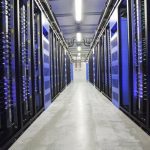
Dr Daisy Wang (UNSW) explained the big challenge that underlies FLEET at the Centre Launch, 12 June. This is her speech.
The information technology revolution has improved our lives, and we want it to continue.
For example, our smartphone has become one of the most important devices of our everyday life: we use it to access up-to-date weather predictions, to plot the best route through traffic, and to watch the new series of House of Cards.
And we expect it be even more powerful in the future: we want it to translate language in real time, and allow us to travel to new locations in 3D virtual reality. We want self-drive cars and an ‘Internet of Things’ where every device talks to every other device.
But it’s not actually happening in your phone. It’s not your smartphone that is doing the really hard work.
All those amazing features that you access via your phone are backed up by a huge network of mobile phone towers, wifi networks and massive, factory-sized data centres, or ‘server farms’.
And this is why the energy costs of computation are slightly ‘hidden’ – out of sight and out of mind.

We have an insatiable demand for more and more computing power
Even the most common events in our daily life, like making a phone call, sending a message or checking the email, requires a lot of computing power. Some tasks, such as watching videos, require a LOT of processing, and a lot of energy, but because all that energy is burnt in these distant, unseen data centres, we tend not to realise it.
But all that computing is currently using about 8% of the world’s electricity, mostly consumed in these huge data centres.
So you might be surprised to learn that your small, compact smartphone actually requires more electrical energy to run than your household refrigerator.
And we are demanding more and more computing power every day. We estimate that the energy used in computation doubles each decade.
For the past 40 years, our ever-increasing need for more computing was largely satisfied by incremental improvements in conventional, silicon-based computing technology – ever-smaller, ever-faster, ever-more efficient chips. We refer to this constant shrinking of silicon components as ‘Moore’s law’.
However, as we hit limits of basic physics and economy, Moore’s law is winding down.
Our current computing technology is running out of steam, and is no longer getting more efficient every year. The efficiency gains with current, silicon-based technology is expected to stop as soon as 2020.

Computing is using 8% of world’s electricity
But our growing demand for computing capacity and energy must be met with gains in computing efficiency, otherwise the information revolution will slow down from power hunger.
Continuing the IT revolution – sustainably – means finding a new technology that uses less energy in computation.
Dr Daisy Wang (UNSW) explained the big challenge that underlies FLEET at the Centre Launch, 12 June. This is her speech.
More information

